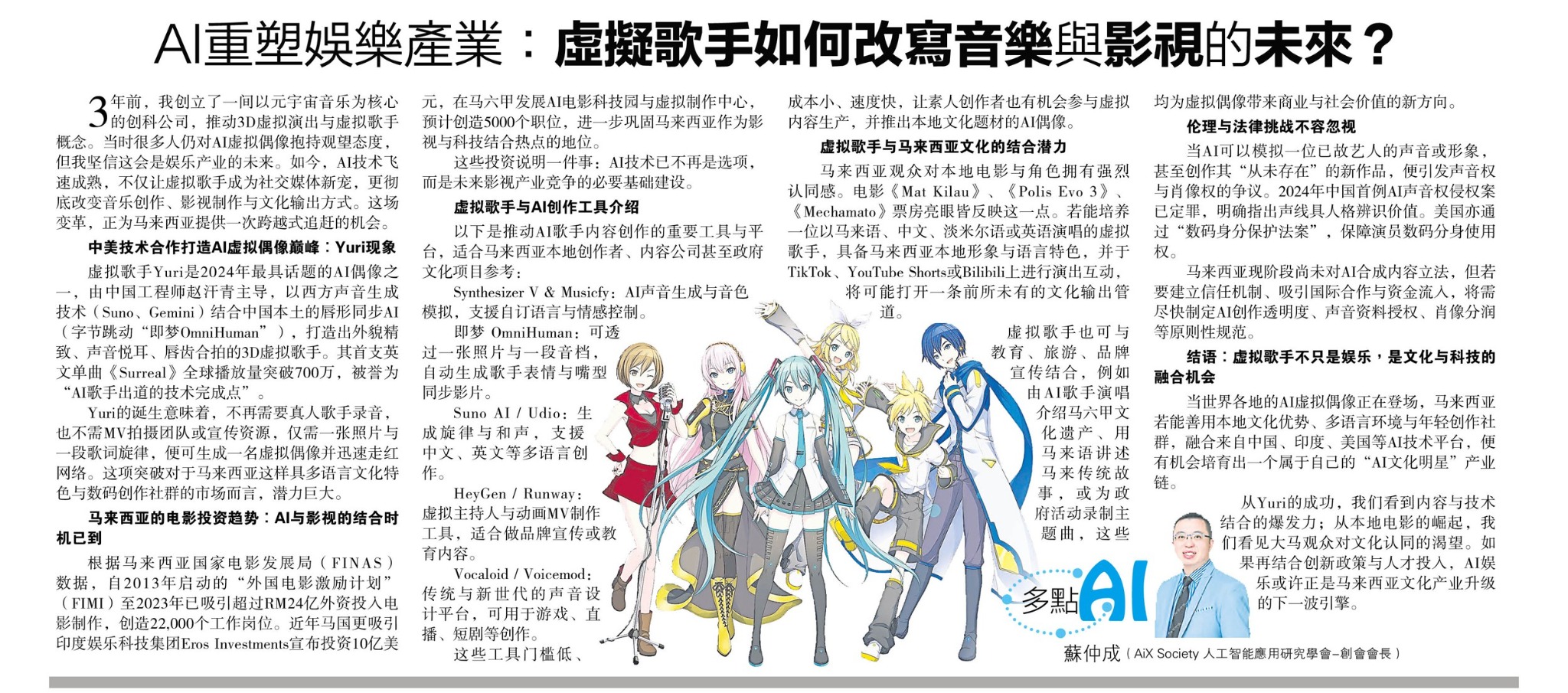Kling vs Veo 3: 2025 Feature Comparison
Kling vs Veo 3: The Ultimate AI Video Generation Showdown The AI video generation landscape

Three years ago, I founded a creative company with the metaverse and music at its core, launching the concept of 3D virtual performances and virtual singers. At the time, many people were skeptical about AI virtual idols, but I believed this represented the future of the entertainment industry. Today, AI is no longer a gimmick. Virtual singers have shifted from niche subculture to mainstream, becoming a new vehicle for culture and creativity. For Southeast Asia, this is an opportunity to leapfrog in cultural innovation.
U.S.–China Collaboration to Build AI Virtual Idol Peak: The Yuri Phenomenon
Virtual singer Yuri became one of 2024’s hottest idol projects. Created by a Chinese engineer, supported by American audio technology companies (Suno, Gemini), and combined with Chinese large model technology (Zhipu AI’s “DreamOmniHuman”), Yuri became a global 3D virtual singer sensation. Even Tencent’s Surreal supported Yuri’s global tour, attracting over 700,000 fans, hailed as “the most complete virtual singer project born of AI.”
Yuri is not just a voice. She has a visual persona, song library, and story arc. Fans can interact with her in real-time, making her feel almost human. This cross-cultural collaboration between China and the U.S. demonstrates how Southeast Asia can harness similar cultural and creative synergies, opening up vast market potential.
Malaysia’s Opportunity: Combining AI with Film and Music
According to Malaysia’s National Film Development Corporation (FINAS), the “Foreign Film Incentive Program” launched in 2013 (FIMI) has brought in over 200 productions, created over 20,000 jobs, and generated billions in investment. Recently, Indian entertainment tech giant Eros Investments invested 1 billion MYR to establish an AI-based film production hub in Iskandar, predicted to create 5,000 jobs and establish Malaysia as a hub for film, television, and AI.
Such investments highlight that AI is not optional—it is the competitive foundation of the future entertainment industry.
Introduction to Virtual Singer and AI Creation Tools
Virtual singers are not just avatars. They are comprehensive creative platforms suitable for Southeast Asian creators. Key tools include:
These tools lower costs, accelerate speed, and democratize creation, letting amateurs and professionals alike join the virtual content wave.
Cultural Synergy Between Virtual Singers and Southeast Asia
Southeast Asia’s film and television market has strong local flavor. Films such as Mat Kilau and Polis Evo 3 prove the box-office potential of regional culture. By integrating local languages and talent, virtual singers can become new cultural symbols for the region, engaging fans through TikTok, YouTube Shorts, and Bilibili, opening cultural export pipelines never seen before.
Virtual singers can also integrate into education, tourism, and brand marketing. For example, using a virtual idol to introduce Malaysia’s cultural heritage in six languages, or promoting government campaigns with digital idols—these extend into limitless creative applications.
Legal and Ethical Challenges
AI’s ability to replicate voices and appearances raises new legal debates around “posthumous existence” and voice likeness rights. In 2024, the first lawsuits around AI voice copyright were filed in the U.S., clearly defining artists’ personal rights. U.S. Congress has also introduced legislation protecting digital identity rights. Malaysia has not yet seen such cases, but must prepare for regulations around copyright, voice data, and likeness usage.
Conclusion: Virtual Singers Are More Than Entertainment—They Are Cultural and Technological Opportunities
Globally, AI virtual idols are on the rise. Southeast Asia, with its multilingual, multicultural landscape, can leverage this to collaborate with China, India, and the U.S. in building a unique “AI Idol Industry.”
From Yuri’s success, we see both technological breakthroughs and the power of local cultural adaptation. The key is not just entertainment—it is the creation of a fusion between culture and technology. With innovative policies, talent strategies, and AI tools, Southeast Asia could ride the next wave of global cultural industry transformation.
By: Michael C.S. So
(AiX Society – Founding President)
Kling vs Veo 3: The Ultimate AI Video Generation Showdown The AI video generation landscape
Three years ago, I founded a creative company with the metaverse and music at its
Hera is an AI‑powered motion design platform that takes the drudgery out of animation. You